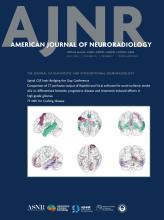First, we would like to thank Hailong Zhong and Aihua Liu for taking the time to read and review our work. We are pleased that they found it of interest. Following their comments, we would like to clarify that all patients included in our study underwent extracranial carotid artery stent placement (CAS). Therefore, patients with intracranial atherosclerotic stenosis were excluded from the study because their management is different from that of extracranial stenosis. Regarding the antiplatelet regimen used in our cohort, we followed our local protocol, which is in line with the European Vascular Surgery Society Guidelines that recommend dual antiplatelet therapy during at least 4–6 weeks after extracranial CAS.1 In addition, before switching clopidogrel to aspirin, we assessed the stent patency using carotid Doppler ultrasound (US) at 30 days from CAS.
Related to carotid surveillance after CAS, as mentioned, carotid US accurately defined residual stenosis of ≥20%, in-stent restenosis of ≥50%, and high-grade in-stent restenosis in patients with extracranial CAS.2 The velocity peak systolic threshold we established to define in-stent restenosis was ≥300 cm/s in restenosis of ≥70%, as previously described.2 Finally, the reason we focused on the first month of follow-up exclusively was to assess the rate of in-stent thrombosis rather than long-term restenosis. Therefore, we monitored the patency of the stent immediately after CAS and during the first month. This first month is also when the bleeding risk increases related to dual antiplatelet therapy to prevent in-stent thrombosis and oral anticoagulation to prevent systemic embolisms/stroke. Nevertheless, we agree that further information regarding stent patency at 6 months or 1 year would be interesting and would have enriched the work. We thank you for your comments, which we will take into consideration for coming investigations.
- © 2024 by American Journal of Neuroradiology












